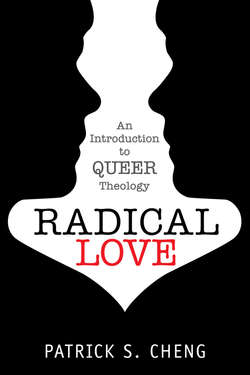Читать книгу Radical Love - Patrick S. Cheng - Страница 12
На сайте Литреса книга снята с продажи.
“Queer” as Umbrella Term
ОглавлениеOne common use of the word “queer” is as an umbrella term that refers collectively to lesbian, gay, bisexual, trans-gender, intersex, questioning, and other individuals who identify with non-normative sexualities and/or gender identities. The term “queer” also can include “allies” who may not themselves identify as lesbian, gay, bisexual, transgender, intersex, or questioning, but stand in solidarity with their queer sisters and brothers in terms of seeking a more just world with respect to sexuality and gender identity. In other words, “queer” is a synonym for acronyms such as LGBTIQA.
It may be helpful here to review the difference between the concepts of sexuality and gender identity. Sexuality refers to the ways in which people are attracted emotionally and physically to the opposite sex, to the same sex, or to both sexes. Women who are primarily sexually attracted to other women are “lesbians,” whereas men who are primarily sexually attracted to other men are “gay.” People who are sexually attracted to both women and men are “bisexual.” People who are sexually attracted to people of the opposite sex are “straight” or “heterosexual.” In general, people within the LGBT community prefer the terms “lesbian,” “gay,” and “bisexual” to the more clinical term “homosexual.”
By contrast, gender identity refers to the ways in which people self-identify with respect to their genders (“female” or “male”), regardless of the sex that they were assigned at birth. People who identify with a gender that is different from their assigned sex at birth are “transgender.” Such people may or may not have had medical treatment (for example, hormones or surgery) to align their physical bodies with their gender identities. By contrast, people who identify with a gender that is aligned with their birth sex are “cisgender.” People who decline to identify with one gender or the other are “gender queer.” Finally, people who are born with ambiguous genitalia or geni-talia of both sexes are “intersex.”5
It is important to note that gender identity is a concept that is distinct from sexuality. In other words, the fact that a person is transgender is separate from that person’s sexuality. Thus, a trans woman (that is, a person who was assigned the male sex at birth but who is self-identified as female) may be a lesbian (that is, sexually attracted to other female-identified people), heterosexual (that is, sexually attracted to male-identified people), or bisexual (that is, sexually attracted to both female-identified and male-identified people).
To summarize, the term “queer” is often used as an umbrella or collective term to describe people with marginalized sexualities (lesbian, gay, or bisexual) as well as with marginalized gender identities (transgender) or genitalia (intersex). We see this use of the word “queer” as an umbrella or collective term in the works of LGBT theologians such as Nancy Wilson, the current moderator of the Metropolitan Community Churches,6 and the late Robert Williams, one of the first openly gay priests in the Episcopal Church.7
